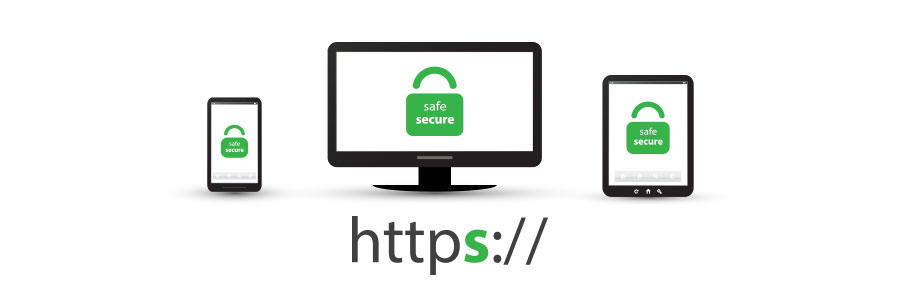Blog

How does HTTPS make web browsing secure?
If you shop online like many people, you need to make sure that the site’s payment page has HTTPS in its URL. Otherwise, entering your personal and financial information on this page can expose you to risks such as identity theft. How does HTTPS make web browsing secure? Read on to find out why HTTPS makes for a safer online browsing experience.
HTTPS ENCRYPTION
The “S” in HTTPS stands for “secured.” It was introduced in 1995, so older websites that have not been updated recently, usually don’t have it. But even to this day, unsecure websites exist, and hackers can easily take advantage of them.
When you visit a site with an HTTP (unsecured) connection, everything you type or click on that website is sent without encryption. This means that anyone who intercepts the data transferred between the website and your computer can view them without a magic decoder ring. Cybercriminals know this, and they can exploit this fact to gain access to your personal information like Social Security number or credit card details. This puts you at risk of identity theft or other malicious activities.
HTTPS CERTIFICATES
When you visit a website, your computer uses an online directory to translate its full name (like www.beringer.net) into a numerical address (like 10.10.20.5). It then saves that information on your computer so that repeat visits to a website will go faster.
If computer gets compromised through malicious activity, it could be manipulated into directing a perfectly safe web address like www.google.com to a malicious website. Often, victims of this type of fraud are sent to web sites that look exactly like the legitimate site but are really fake copies designed to trick users into trying to login several times with a “bad password” while their credentials are being collected and immediately tested on the real website. Don’t become a victim of this type of activity!
To prevent an incident like this, the online directories mentioned earlier issue an ecosystem of Secure Sockets Layer (SSL) certificates that turn “HTTP” into “HTTPS”, making it impossible for anyone to be redirected to a fraudulent website.
HOW DOES THIS AFFECT OUR DAILY BROWSING HABITS?
We often visit many websites in a short period of time without checking each one for padlocks and certificates. Unfortunately, we can’t ignore the importance of HTTPS, so here are a few things to consider:
- If your browser marks a website as “unsafe,” think twice about clicking “Proceed anyway.” Click the prompt only if you are absolutely certain that you need to go to the site and you will NOT be exchanging any personal data.
- Add a web browser extension such as HTTPS Everywhere, to create encrypted connections to unencrypted websites. These extensions encrypt your communication with websites and are compatible with Brave, Chrome, Firefox, Opera, and Edge browsers (and others).
- Take the time to be vigilant. Some sites may have HTTPS, but it doesn’t mean they’re safe. For example, goog1e.com (with the “l” replaced with a one) could have a certificate, but the misspelling clearly indicates that it’s an untrustworthy site – trying to look like a legitimate site. Cybercriminals use similar spellings of authentic websites to fool people into thinking that they’re on a secure site. This is called typosquatting or URL hijacking.
- Make a habit of paying attention to the website URLs you are going to, especially for sites you have not visited before. Stay away from sites without HTTPS as much as possible.
GET IN TOUCH!
Interested in learning more about safe browsing habits for yourself, employees or co-workers? Get in touch today!
Beringer Technology Group, a leading Microsoft Gold Certified Partner specializing in Microsoft Dynamics 365 and CRM for Distribution also provides expert Managed IT Services, Backup and Disaster Recovery, Cloud Based Computing, Email Security Implementation and Training, Unified Communication Solutions, and Cybersecurity Risk Assessment.




